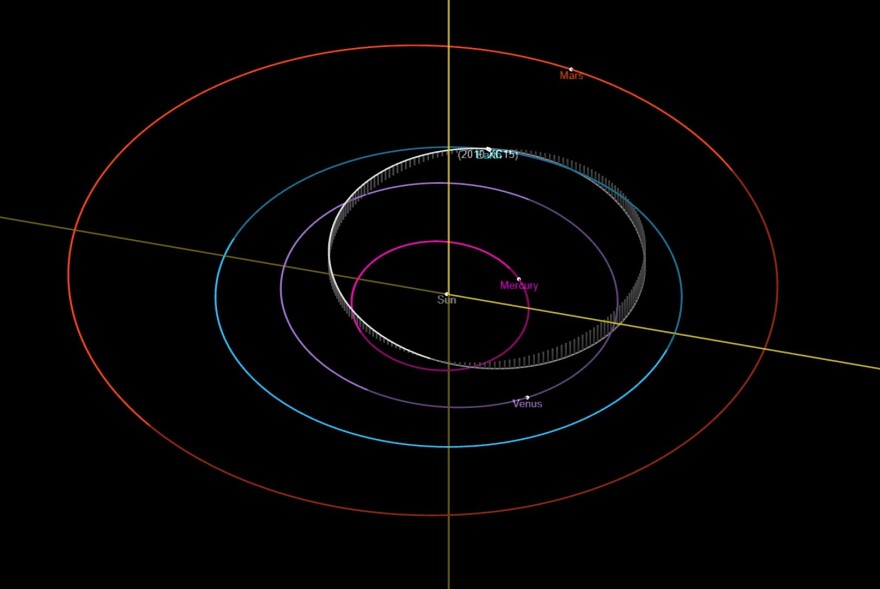There is a little asteroid that will be close to earth this week – about twice as far away from Earth as the moon is.
The High-frequency Active Auroral Research Program research site in Gakona – what Alaskans know as HAARP, will transmit radio signals to the little rock named asteroid 2010 XC15. It is not as close as some asteroids get.
“There are lots of small asteroids that fly between us and the moon. It happens about once a week,” says Mark Haynes, the lead investigator on the project and a radar systems engineer at NASA’s Jet Propulsion Laboratory.
“But this is the first time we’re trying to do this with very low frequencies or very long wavelengths, and the difference is these long wavelengths, you know, can penetrate the interiors of the asteroids.”
That’s where HAARP comes in. In spite of the name “High-frequency Active Auroral Research,” this experiment uses low frequencies. Haynes says it is the lowest frequency/Highest power transmitter available for JPL and NASA to use. In the experiment, HAARP “chirps” about every 2 seconds, sending radio waves up to the asteroid to bounce back to Earth.
“They're gonna steer their beam at the asteroid. We've got two radio observatories -- one's in California, the Owens Valley Long Wavelength Array, and one is in New Mexico, the New Mexico Long Wavelength Array. They're both gonna receive the signal, so HAARP transmits and these radio observatories, they're gonna track it for about 12 hours,” Haynes said.
The experiment was scheduled to start at 2:00 a.m. Tuesday, depending on conditions in the ionosphere.
This is the first time HAARP’s signals probe an asteroid. The experiment tests the potential use of HAARP for sensing what is inside of near-Earth asteroids.

“The hope is if we get these systems working together, then eventually we can probe the interiors of these asteroids, as they come close.”
Haynes says there is another flyby coming very quickly, in six years. On April 13, 2029, asteroid Apophis, will pass less than 20,000 miles (32,000 kilometers) from our planet’s surface – closer than our geosynchronous satellites.
“ In 2029, Apophis will get very close. It'll be, you know, about one-10th the distance between us and the moon, and it's gonna be a big event. And that's an opportunity that we have to try to actually probe the interior of the thing while it's flying past. These experiments with HAARP and the radio observatories are, are kind of a rehearsal.”

In 2021 the University of Alaska Fairbanks received a 5-year $9 million National Science Foundation grant to establish and operate the “Subauroral Geophysical Observatory for Space Physics and Radio Science” at HAARP.
Scientists have alerted HAM radio operators of the transmission, and have asked them to send reports of any echoes they can discern.
Haynes says it will take months to process the data from Tuesday's asteroid bounce.



